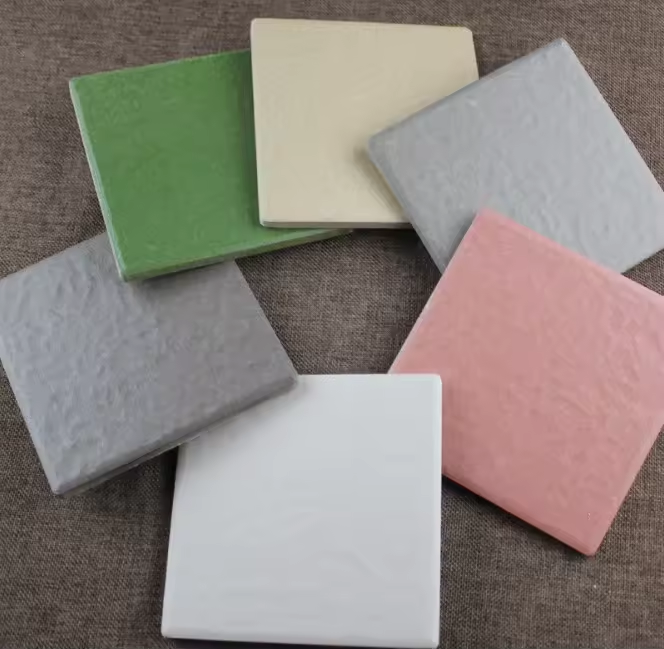Introduction
In modern public spaces, design goes far beyond aesthetics. One of the most discreet yet impactful innovations in urban planning is the implementation of tactile paving. These seemingly simple features do more than add texture to the ground—they guide, alert, and protect pedestrians in subtle but vital ways. Often overlooked, ceramic tactile tiles are essential components in the built environment, influencing how people interact with their surroundings.
NOTE: Public infrastructure had been significantly improved with ceramic tactile paving, making environments safer and more accessible. These upgrades showcased compliance with global accessibility standards. To get expert solutions for your facility, contact Taasim LLC now.
Understanding the Function of Tactile Surfaces
Tactile surfaces are textured ground features that communicate information through touch. Primarily designed for visually impaired individuals, they help navigate public spaces safely by signaling transitions, hazards, and direction. These installations are particularly valued for their durability, ease of cleaning, and slip resistance.
There are two main types of tactile indicators:
- Warning Indicators: Alert users to potential hazards like platform edges or street crossings.
- Directional Indicators: Guide users along a safe, designated route.
These features are often found in transit stations, sidewalks, public buildings, and pedestrian crossings.
Why Ceramic Tactile Solutions Stand Out
Among the various materials used for tactile paving—like stainless steel, rubber, and concrete—ceramic offers a unique combination of functionality and aesthetics. It is widely favored for its:
- High Durability: It withstands heavy foot traffic and harsh weather conditions.
- Low Maintenance: It resists staining and is easy to clean, making it ideal for busy environments.
- Slip Resistance: Special textures provide grip, reducing the risk of accidents.
- Design Flexibility: Available in multiple colors and patterns, these tiles can complement the visual language of modern urban spaces.
Applications in Urban Infrastructure
Ceramic tactile paving plays a crucial role in transportation hubs like metro stations and airports, ensuring that visually impaired passengers move through complex areas with ease. In urban sidewalks and parks, they offer safe passage across intersections and through busy zones.
Educational institutions, healthcare facilities, and commercial buildings also integrate tactile surfaces to comply with accessibility standards and promote inclusivity.

The Role in Inclusive Design
Accessibility is not a feature—it’s a necessity. Inclusive design aims to create environments that are usable by all people, regardless of ability. Tactile surfaces support this by providing non-visual cues that are just as informative as signs or signals. Their presence empowers individuals with visual impairments to navigate public spaces independently and confidently.
Incorporating such tactile indicators is more than a regulatory requirement; it’s a commitment to equality and thoughtful design.
Installation and Best Practices
For tactile tiles to function effectively, proper installation is critical. They should be placed:
- At entrances and exits
- At the top and bottom of staircases
- Near platform edges
- At pedestrian crossings
The tiles must be laid flush with surrounding surfaces and aligned to maintain consistent orientation. Installation guidelines often follow international standards for spacing, layout, and size to ensure uniformity and effectiveness.
Maintenance Considerations
Although ceramic is a low-maintenance material, regular cleaning is necessary to ensure the textured surface remains effective. Accumulated dirt or wear can reduce tactile feedback. Routine inspections help identify any damage or misalignment early, preventing costly repairs or accessibility failures.
Additionally, using contrasting colors for tactile tiles not only aids visibility for low-vision users but also highlights their presence to all pedestrians.
Innovations in Tactile Technology
Advancements in ceramic tactile technology include the integration of:
- Photoluminescent Properties: Glow-in-the-dark features enhance nighttime visibility.
- Smart Sensors: Embedded sensors can relay foot traffic data or trigger lighting.
- Eco-friendly Materials: Sustainable manufacturing practices reduce environmental impact.
These innovations are shaping the future of tactile design, blending utility with smart-city infrastructure.
Global Standards and Accessibility Laws
Many countries have strict building codes and accessibility regulations that mandate the use of tactile paving. These include:
- ADA (Americans with Disabilities Act) in the USA
- DDA (Disability Discrimination Act) in the UK
- JIS (Japanese Industrial Standards)
These installations are often chosen to meet these regulations due to their reliability and performance across diverse environments.
Challenges and Limitations
Despite their benefits, tactile tiles face some challenges:
- Installation Cost: High-quality tiles and skilled labor may involve higher upfront costs.
- Damage in High-Impact Zones: Although durable, ceramic can crack under extreme impact.
- Design Integration: Aesthetic conflicts may arise in heritage or luxury locations.
Still, the advantages often outweigh these concerns, particularly when considering long-term usability and compliance.
Final Thoughts
These surfaces might go unnoticed by many, but they play a crucial role in shaping safer, more accessible public spaces. Their integration into urban design is a testament to thoughtful planning, where safety and inclusivity are built into the very ground we walk on. As awareness and innovation continue to grow, ceramic tactile tiles will remain essential in the evolution of truly accessible environments.
Whether you’ve noticed them or not, the next time you feel a textured tile underfoot, you’ll know there’s more to it than just a patterned surface—it’s a step toward universal design.
For More Isightful Articles Related To This Topic, Feel Free To Visit: bdnews55